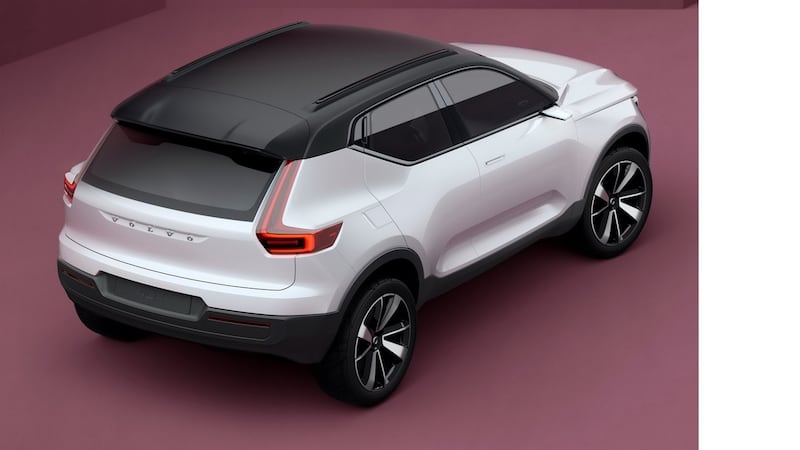To a person of certain musical tastes, CMA usually stands for Country Music Awards but from 2017 those letters will represent the future of Volvo and the Swedish car industry. Away from steel guitars and Hank Williams, CMA stands for compact model architecture and it's what lies beneath the rather shapely bodies of the 40.1 and 40.2 concepts.
Unsurprisingly, these are previews of what the next-generation V40 will look like, and its the CMA, co-developed with Volvo's owners, Chinese car maker Geely, that is critical to the success of that car, and therefore critical to the success of Volvo.
CMA is essentially a Sino-Swedish answer to Volkswagen’s MQB platform, and like that has been designed to make it as easy as possible to spin off different models from a core platform. Front-drive, four-wheel drive, diesel or petrol, hybrid or full electric, the CMA can manage it all.

XC40 crossover
More importantly for Volvo, it also frees the 40 model family up from using Ford’s old hand- me-down MkII Focus chassis and allows the Swedes to create different bodies. And, not surprisingly, given the current clamour for small SUVs, the first of the new 40 family to go on sale, in 2017, will be the XC40 crossover, as previewed by the 40.1 concept.
It’s a very, very handsome car, this concept – taking the basic styling of the XC90 and V90 and successfully shrinking it down. It looks immediately better looking than Audi’s forthcoming Q2 (albeit this is still a concept, not a final production model) and if Volvo can translate this styling through to production it’s hard not to see it being very appealing.
It should be very frugal and have low emissions too. Volvo is promising a new 1.5-litre turbo three-cylinder petrol engine which can be optionally combined with a plug-in hybrid “Twin Engine” power train for some zero-emissions motoring.
Volvo wants to have a million electric and hybrid cars sold by 2025, and the XC40 and V40 will be critical to that plan. Expect a 50km one-charge range and overall emissions of less than 40g/km.
There won’t be a downsized diesel though. Volvo has said that it’s happy with its 2.0-litre diesel four-cylinder engine, which develops 120hp in its lowest tune, and says that it cannot see the efficiency benefits of creating a smaller unit than that.
“The new 40 series cars have the potential to improve our market penetration in an important growing segment,” said Håkan Samuelsson, Volvo’s president and chief executive. “An electric power train programme including both a new compact Twin Engine plug-in hybrid as well as a pure electric car are central to the CMA architecture.”
V40 hatchback
The XC40 will be followed by a new V40 hatchback, as previewed by the 40.2 concept, which looks very similar, but cleaner, lower and leaner. Again, if the concept's looks can be brought through to the dealerships it will give the Audi A3 a serious run for its money in the looks department.
It could give the A3 a serious challenge in sales terms too, as Volvo will also be making a third version of the next 40- series: a four-door saloon, something that Volvo has lacked in the compact market since the old S40 left production.
"By taking a modular approach to both vehicle architecture and power train development we have succeeded in leap-frogging many of the players in the premium segment," said Dr Peter Mertens, senior vice-president of research and development.
“Our new battery electric power train variant opens yet another exciting chapter in the unfolding Volvo story.”
Volvo is apparently also working on an all-electric spin-off from the larger SPA platform which underpins the current XC90, S90 and V90.
It hasn’t been confirmed whether it will be an electrified version of one of these, or a fourth body style but the car is thought to be a rival to Tesla’s Model S saloon, and Volvo has indicated that it it currently has a one-charge range of 350km, but that is expected to increase as development continues.
The 40 series is still the more crucial model though. Volvo has to get to 800,000 sales a year to make itself financially viable, and a big-selling compact model family is crucial for that. The CMA platform will have to be perfectly in tune with buyers’ expectations to be that success.



















